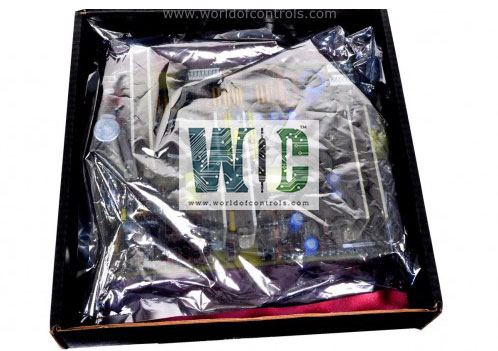SPECIFICATIONS
Part Number: IS200VPRWRH1B
Manufacturer: General Electric
Series: Mark VI
Product Type: Turbine Protection Board
Span: -8 mV to +45 mV
Repair: 3-5 days
Availability: In Stock
Country of Manufacturer: United States (USA)
Functional Description
IS200VPRWRH1B is a turbine protection board developed by General Electric. It is a part of Mark VI control system. The Mark VI system offers various configurations to suit diverse operational requirements, ensuring seamless integration and optimal performance in turbine control applications. Mark VI system stands as a versatile, reliable, and adaptable solution for turbine control, offering various configurations and features to meet diverse operational needs while ensuring optimal performance, reliability, and ease of maintenance.
Redundancy Features
- Simplex: In typical power plant setups, simplex systems are employed for tasks where standard reliability suffices, such as managing auxiliaries and the balance of plant (BOP). These systems often feature a single Programmable Logic Controller (PLC) equipped with both local and remote I/O capabilities. Within a Mark VI setup, numerous I/O components are non-critical and are thus configured in simplex mode. This setup allows for the seamless integration of simplex I/O boards alongside Triple Modular Redundant (TMR) boards within the same interface module.
- TMR: Triple Modular Redundant (TMR) control systems, exemplified by the Mark VI, are specifically tailored for the rigorous demands of turbine control and protection applications. Here, utmost reliability is paramount to minimize plant downtime arising from control issues, as the turbine can sustain operation even in the event of a controller or I/O channel failure. In a TMR system, any failures are promptly detected, annunciated, and can be rectified online. This ensures that the turbine protection system remains fully operational, assuring the event of turbine-related issues.
Input Processing
- Input processing in the system involves the utilization of input signals by all three controllers, albeit with varying methodologies. When an input signal is present in only one I/O module, its value is shared among all three controllers as a common input, without employing SIFT-voting mechanisms. This ensures consistency and synchronization across the controllers.
- For signals present in all three I/O channels, an application-voting process may be employed to amalgamate these inputs into a single value. These triple inputs can originate from either three independent sensors or can be derived from a single sensor through hardware fanning at the terminal board. This flexibility allows for efficient data aggregation and decision-making processes within the control system, enhancing overall functionality and performance.
Speed Control and Overspeed Protection
- Six Passive Magnetic Speed Pickups: The system uses six passive magnetic speed pickups to monitor the turbine's speed. These sensors are critical for detecting the rotational speed of the turbine and ensuring it operates within safe limits.
- First Three Speed Pickups: These are monitored by the system controllers. The controllers utilize a median signal from these three pickups for accurate speed control and primary overspeed protection. Using the median signal helps to filter out any erroneous readings and ensures reliable speed measurement.
- Second Three Speed Pickups: These are connected to the R8, S8, and T8 channels in the protection module. Each channel independently monitors one of these pickups to provide an additional layer of protection.
- Provision for Nine-Speed Pickups: The system can accommodate up to nine-speed pickups, which can be either passive magnetic speed pickups or active pulse rate transducers (TTL type). This flexibility allows for enhanced monitoring and redundancy.
- R8, S8, and T8 VPROs: Each of the R8, S8, and T8 VPROs (Vibration Protection and Monitoring Modules) monitors three of the nine speed pickups. This division ensures that there is comprehensive monitoring across different channels, providing robust overspeed protection.
Primary and Emergency Overspeed Trip Limits: The application software includes programmable settings for both primary and emergency overspeed trip limits. These trip limits are critical safety parameters that shut down the turbine if it exceeds designated speed thresholds.
- Primary Overspeed Trip: The primary trip setting is designed to activate when the turbine speed exceeds the normal operating range but before reaching a critical speed.
- Emergency Overspeed Trip: There are two levels of emergency overspeed trip limits. These are programmed to activate at higher speed thresholds to ensure the turbine is shut down before any damage occurs. The second emergency overspeed trip limit acts as an additional safeguard and must be programmed into the I/O configurator to confirm the exact emergency overspeed (EOS) trip point.
WOC has the largest stock of Speedtronic control spares. Please contact our staff by phone or email for pricing and availability on any parts and repairs
FREQUENTLY ASKED QUESTIONS
What is IS200VPRWRH1B?
It is a turbine protection board developed by General Electrics.
What is the purpose of SIFT-voting in input processing?
SIFT-voting is a method used to handle input signals in systems with multiple controllers. It ensures consistency by determining the most valid signal among redundant inputs.
When is application-voting used for input signals?
Application-voting is employed when a signal is present in all three input/output (I/O) channels. It combines these signals to create a single input value for enhanced decision-making.
How are input signals managed if they exist in only one I/O module?
In such cases, the signal is used as a common input by all controllers without employing SIFT-voting, ensuring synchronization and consistency across the system.
